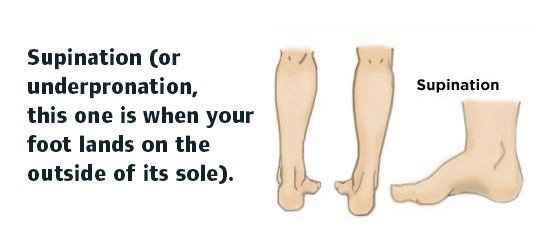Do Your Running Shoes
Make the Cut?
So you've decided to buy
new running shoes. Or maybe you're wondering if the running shoes you have now
are doing all they can for you. You're asking yourself, what is the best
running shoe? Unfortunately, like many great questions, the answer is: it
depends.

Image Source: http://blondebostonian.com/wp-content/uploads/2013/03/IMG_1853.jpg
The rows and rows of
shoes at your local sporting good stores can be pretty daunting. Between brand,
color, shape, and fit, you may find yourself lost when it comes to choosing the
right shoe for you. Below is a helpful guide on picking out the right shoe for
your needs.
Your Feet Have Needs
Each person's feet have
a different profile. Some have flat feet, and some have high arches. Some
over-pronate, and some under-pronate. Some run on their toes, some strike the
ground hard on their heels. A good idea is to go and have a sales associate at
a running store have your foot assessed and tell you what your individual needs
are. You can also examine your footprint by stepping in sand or on paper with
wet feet (some shoe stores also have places where you can step on a platform
and assess your footprint).
Once you know a little
about your feet, here are some things to look for:
Flat Feet:
If you're flat-footed,
you are most likely an over-pronator, which means that your feet roll inward
when you run, like this:

Image source: http://www.pedorthicscanada.ca/wp-content/uploads/2014/03/excess-pronation.jpg
Because of this, you'll
need stability when you run. Look for the words "stability" or
"motion control" when you are at the store. You might also need
shoe inserts, depending on the severity of the flatness of your arches.
High-arched Feet:
If you have high arches,
your feet most likely roll outward when you run, which means you supinate, or
under-pronate, like this:

Image source: http://www.feetlife.co.uk/blog/wp-content/uploads/2013/09/Shoe-Insole-Supination.jpg
Since you put pressure
on the mid-sole of your shoe when you run, you'll want to find a shoe that
absorbs shock well. Look for words like "flexible" or
"cushioned" in the description.
Neutral/Normal Feet:
If your feet look like
the middle foot in the image below, then you probably have a neutral foot.

Image source: http://pediology.com.sg/wp-content/uploads/2014/04/pronation-pic1.jpg
Lucky you! Your options
are open. As long as you don't pick a shoe that doesn't fit the shape of your
foot, you should be fine. However, it's probably best to pick shoes that don't
have a lot of stability or motion control, as these may alter your stride. You'll
be glad to know that with a neutral foot, you're least susceptible to injury.
Price and Style

Image source: http://www.saleaf1.com/images/Nike-Dunk-high-heels/Nike-Air-Max-95-Air-Cushion-High-Heels-Blk-Pink-Sale_2.jpg
Just because the shoe is
expensive and flashy doesn't necessarily mean that it is going to be right for
you. However, you are going to have to face the fact that running shoes are
going to be pricey. A range of $70 to $100 is to be expected for a quality
shoe. Try not to think about the price when trying on shoes; choose the shoe
that feels the best. Also, try not to base your choice on the look of the shoe.
Many brands put out shoes with an hourglass shape to make the foot appear
smaller/thinner, but feet aren't shaped like hourglasses. When trying on your
shoes, walk around the store, jog in place, do whatever you can to get the feel
of the shoe.
Inserts

http://www.thefootlab.com/Images/SuperFeet_Orthotic_Shoe_Insoles.jpg
If you feel like the shoes you're trying on just aren't giving you that support you need, it may be a good idea to look into shoe inserts. There are different kinds of inserts, including arch supports, insoles, heel liners, and foot cushions.
Arch supports are designed to support the foot's arch. Insoles provide extra cushioning and support. Heel liners are for extra support in the heel region, especially helpful for older customers who have foot pain caused by age-related thinning of the heel's natural fat pads. Foot cushions can be used as a barrier between your foot and the shoe, designed to prevent rubbing and other discomfort.
If you feel like you need a little extra help, look into getting a prescription orthotic insert. These are designed to comfort and support your individual feet. They are specifically shaped to the contours of your feet and require a complete evaluation by your podiatrist.

Image source: http://www.bestselfatlanta.com/components/com_wordpress/wp/wp-content/uploads/2012/05/old-running-shoes.jpg
First you're told to buy
an expensive pair of running shoes, and then you're told that you need to get
them every few months? Sadly, if you want to get the most out of your shoes and
your runs, you will need to replace your shoes frequently. The gold standard is
every 500 miles or every six months, whichever comes first. You may be tempted
to keep your shoes going if they still seem fine, but try to avoid this as it
may be detrimental to your running and cause injury.
Signs it's time to
replace your shoes:
- You've been feeling muscle fatigue, shin splints, or
pain in your joints (especially your knees)
- The "twist test": if you hold your shoe at
opposite ends and twist, it should feel firm. An old shoe or one that
doesn't have proper support will twist easily.
- Your soles are worn out
- Newer shoes feel much better (try new ones on once in a
while to check)
When it comes to running
shoes, it's all about your individual comfort. Don't gravitate toward style
first; pick shoes that will be the most supportive and carry you through your
runs. Be sure to replace them as often as is needed with your running routine.
Sources:
http://running.about.com/od/shoesapparelandgear/a/foottypes.htm
http://running.about.com/od/shoesapparelandgear/f/replaceshoes.htm
http://running.about.com/od/runningshoereviews/tp/replacerunningshoes.htm
http://www.webmd.com/fitness-exercise/features/how-to-buy-running-shoes-tips-to-treat-your-feet-right
http://www.apma.org/Learn/FootHealth.cfm?ItemNumber=988
No comments:
Post a Comment